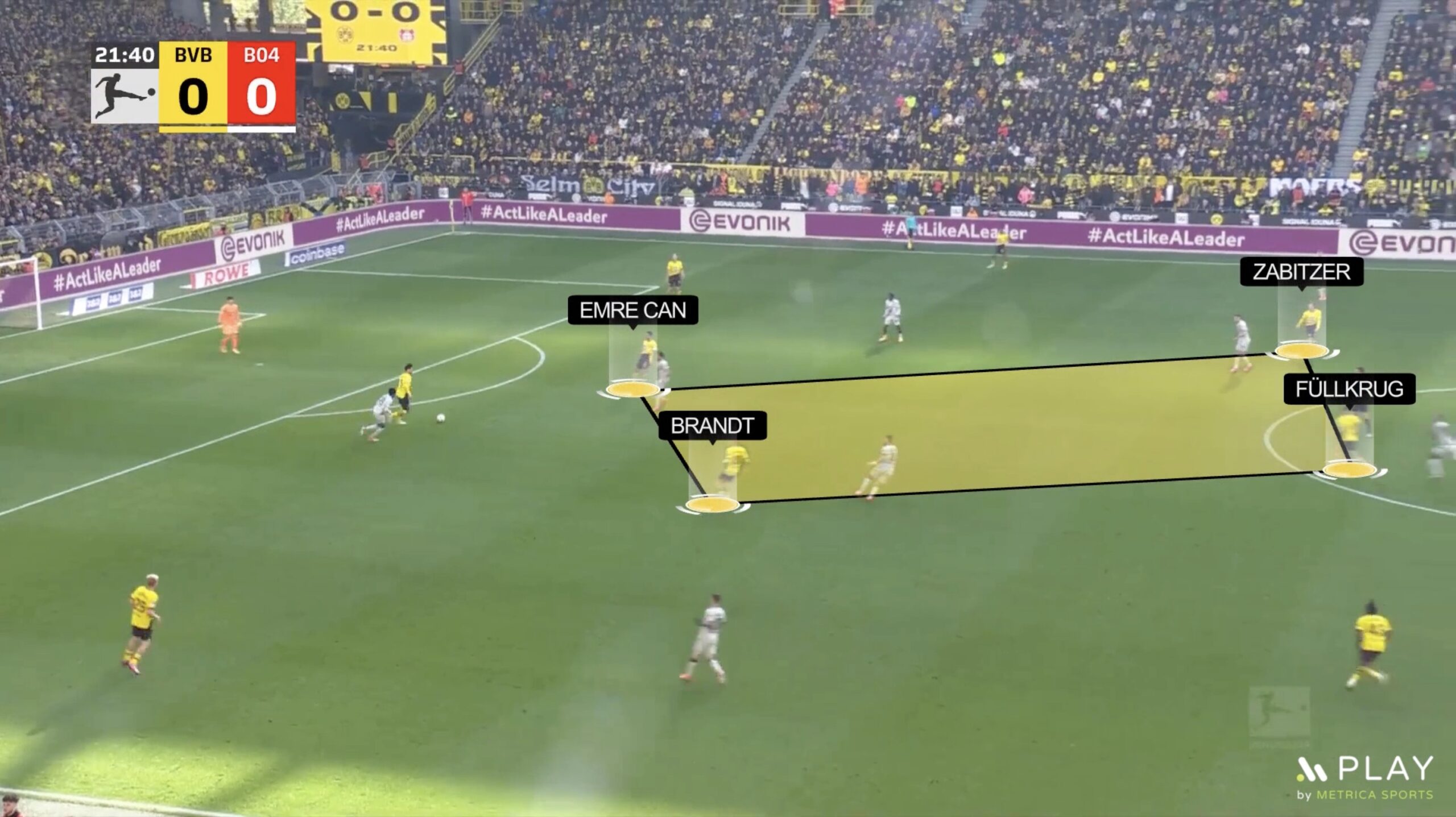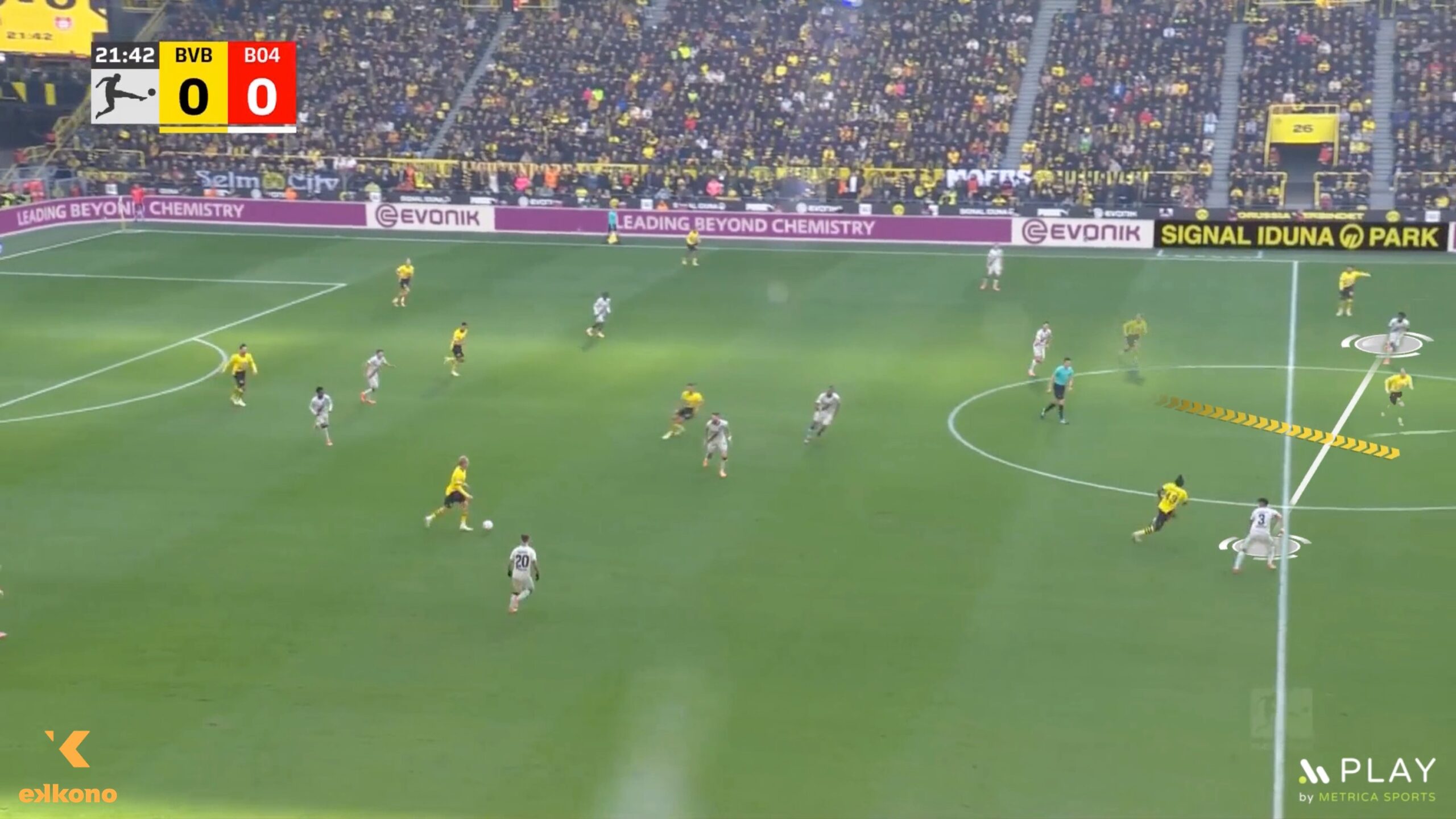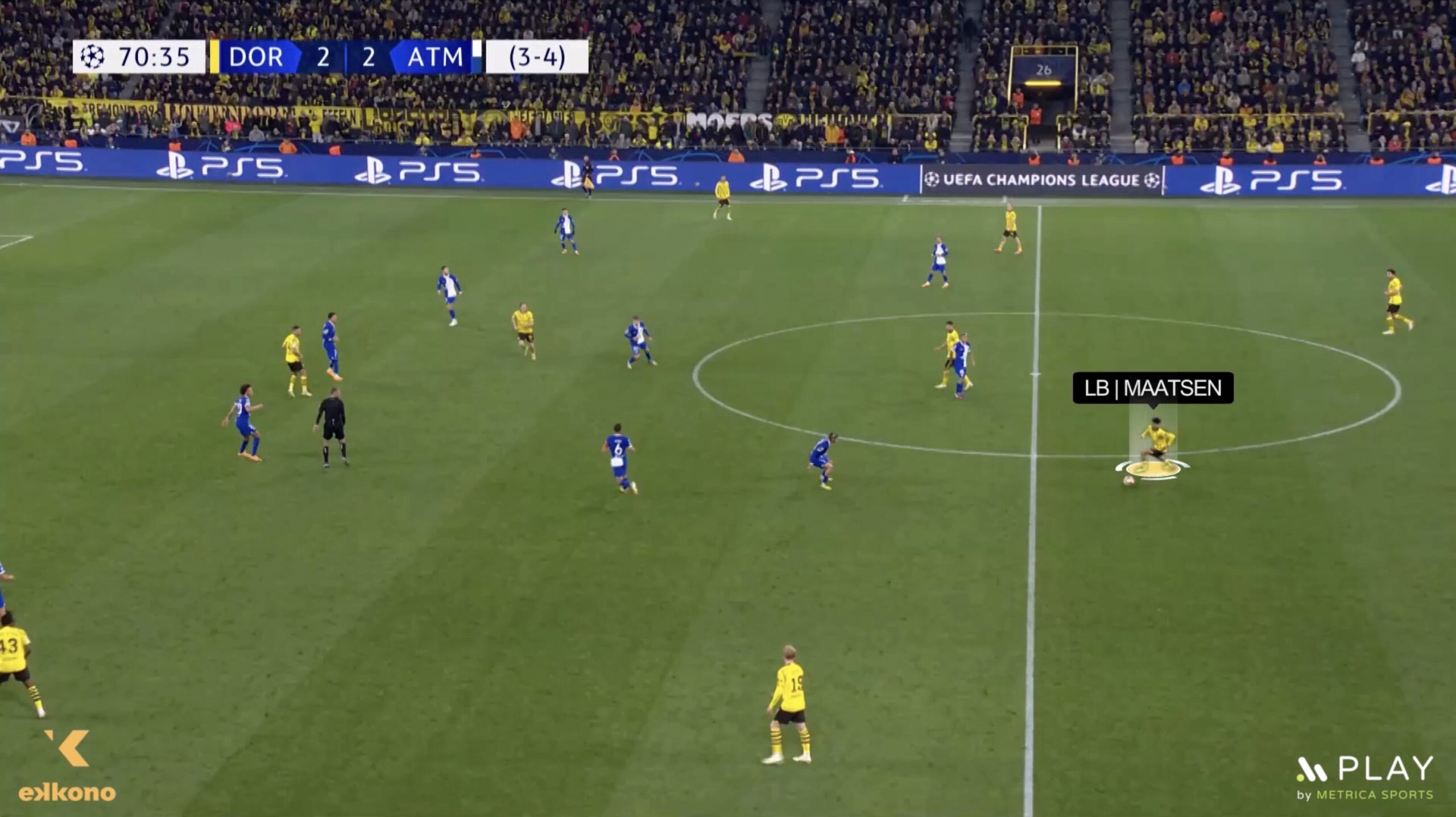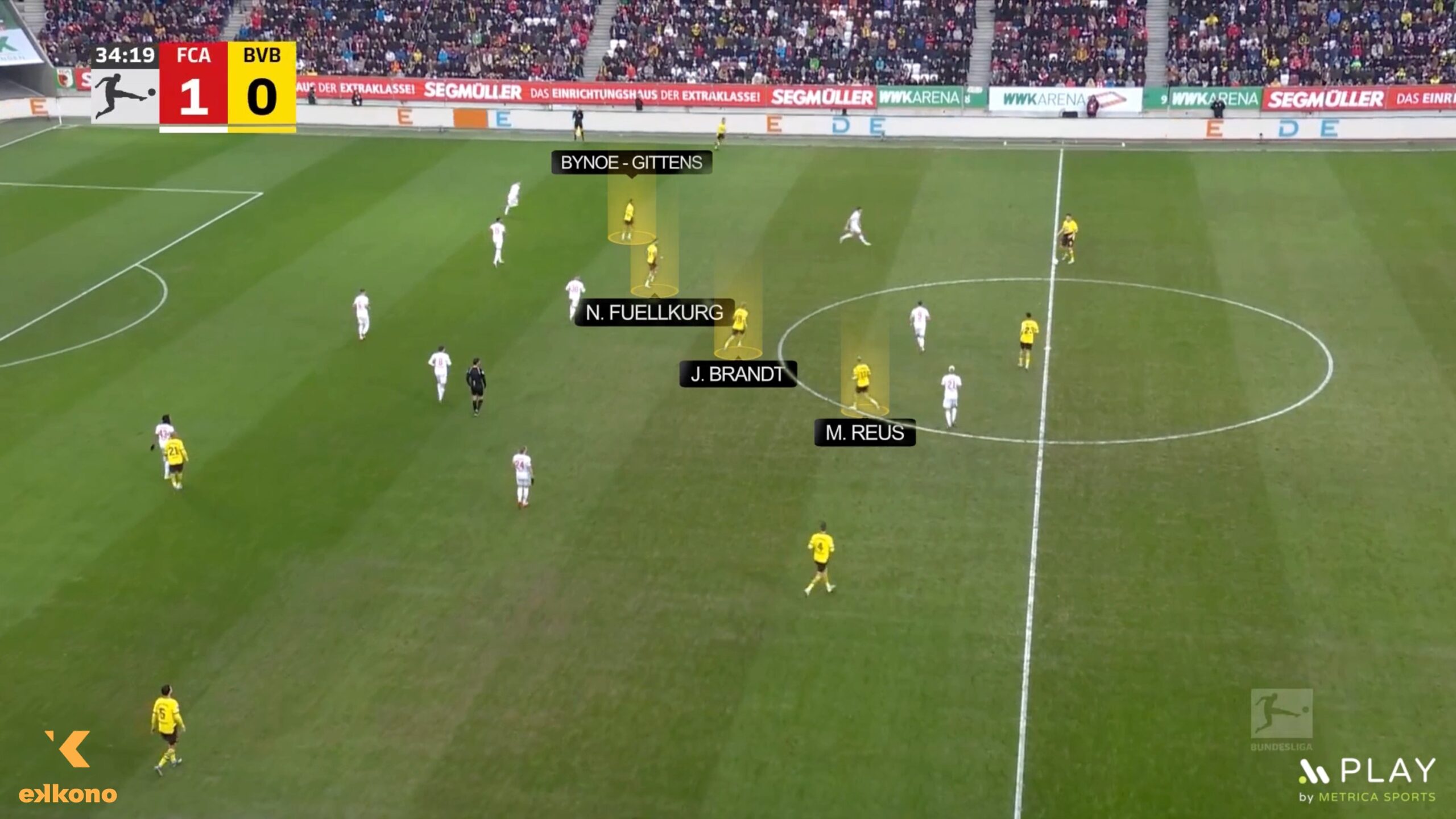
In this analysis, we examine the idea of playing by principles and how a team that has captured attention at the pinnacle of European football by reaching the semifinals of the Champions League applies it. We are talking about Borussia Dortmund, which has excelled on the European stage, displaying high-level associative play and considerable offensive power. We’ll explore the principles of their attack style, grounded in a 1-4-3-3 tactical system.
The German team adheres to this system as a fundamental approach, deploying various tactical moves that reveal a well-defined strategy: achieving superiority within the opponent’s defensive block. We’ll analyze two key phases of play—build-up and progression—to understand how they apply certain principles to obtain advantage and which players are involved in the process.
Principles in the Build-Up
In the build-up phase, the first principle in attack the German team seeks to create is achieving numerical superiority in the inner areas. Usually, their striker positions himself to receive the ball, drawing four players into the inner areas. This move prompts the wingers to narrow their width, indicating a clear tactical strategy. If an opposing center-back follows the forward, the wingers exploit the space left behind them. If not, the players look for open inner passing options.
In other occasions, it is the winger on the opposite side of the ball who moves into the central lane, also forming a four-man shape in the central area. Meanwhile, another player which is usually the midfielder on the opposite side shifts toward the ball, acts as a second forward or advanced midfielder, creating confusion in the opposing team. This additional movement aims to guide the ball to unmarked players or less crowded areas.

Attacking the space behind
In this case, we can see how Sabitzer (AM) attacks the space left between defenders after one of the center-backs has followed Füllkrug (ST).

Numerical superiority in inner areas
In this example, Emre Can (M), Zabitzer (AM), Brandt (AM) and Füllkrug (ST) form a diamond shape in the central area, helping the team have numerical superiority in that area.
Principles in the Progression Phase
Next, we focus on the progression phase, where Borussia Dortmund shows a remarkable ability to create scoring opportunities and gain advantages through combinations. In this episode, they continue their strategy of creating inner play advantages by moving an outer player into the central zone, as this is one of their principles in attack. This additional player is typically a winger or a full-back.
Unlike the build-up phase, the full-back has greater freedom to generate superiority in the central space. Depending on which player moves into the central areas, whether it’s the full-back or the winger, the player not involved in the central movement maintains width on the flanks. This approach aims to create space in inner zones or leave an outside player unmarked.

Occupation of the inner space by LB
In this example, after the team progresses Ian Maatsen (LB) moves into central zone to contribute to the numerical superiority in the central lane.

Occupation of the inner space by winger
In this other action, it is Bynoe-Gittens (RW) who occupies the inner space. This is a clear principle from their 4-3-3 structure, but it is not always the same player who ensures it.
Finally, another of their principles in attack is how a minimum of three players ensure maximum depth to maintain the opposing defensive line busy. Typically, these players are the wingers – or full-back – plus the striker as the third player. However, if the striker drops back to create numerical superiority in inner spaces, one of the midfielders quickly attacks the space behind the opposing defense when a center-back leaves their position. Therefore, as seen earlier in this analysis, they play by principles and not by closed solutions, adapting the role of each player based on their teammates and opponents’ movements in each situation to make sure the team is applying certain principles. This approach, helps create more uncertainty in their attacks and prevents the team from being predictable and easy to defend.

Maintaining the defensive line busy
In this action, we can see how a minimum of three players of Dortmund are ready to attack the space behind the defensive line, keeping the defensive line busy.
Conclusion
As we have seen in this analysis, Borussia Dortmund is an offensively strong team, in part due to the way they play by principles in the attacking phase. The variability in their attack, thanks to many players being able to apply the team principles, helps them be unpredictable and take advantage of each episode in the offensive phase. In addition, they stand out for their high-quality associative play, where intricate passing combinations create advantages on the field. Clearly, this is a team with very solid offensive principles that have proven highly effective, especially on the European stage.
Remember you can watch the full analysis in video inside our virtual campus. Not a member? Check our membership plans and sign up now.
